Lisbon Historical Tours Unlock 3,000 Years of Secrets
Last updated on August 15, 2025 at 10:42:23
What You Need to Know First About Lisbon Historical Tours:
- This city is 400 years older than Rome (and locals never let Romans forget it)
- One earthquake in 1755 wiped out 85% of everything — and sparked modern urban planning
- Last year, 3.5 million people came hunting for history here
- Skip July-August unless you enjoy queuing with cruise ships — October is magic
- Two UNESCO sites that actuallhqy deserve the hype: Belém Tower and Jerónimos
Right, let me tell you about the morning that changed how I see Lisbon forever. There I was, desperately trying to fish my son’s toy car out of a storm drain on Rua da Prata — you know, standard dad stuff — when I noticed something odd through the grate. Stone arches. Proper Roman ones, just casually existing under a busy shopping street.
That was six years ago, not long after we’d swapped Brighton for Lisbon (part-time at first, because who abandons fish and chips completely?). Now I can’t walk ten metres without spotting another piece of the puzzle. This city is basically a 100-square-kilometre history book that someone forgot to close.
Here’s the mad thing: most of the 3.5 million tourists who descended on Lisbon last year walked right over these stories. Literally. There’s a Roman theatre under a car park in my neighbourhood, and people complain about the uneven surface without realising they’re parking on Caesar’s entertainment complex.
How Well Do You Know Lisbon?
Lisbon’s Timeline is Absolutely Bonkers (In the Best Way)
The “We Were Here First” Era (1200 BCE – 205 BCE)
My Portuguese teacher, Senhora Conceição, loves reminding her British students that when our ancestors were still figuring out mud huts, Lisbon had proper Phoenician traders haggling over tin from Cornwall. She is correct; researchers discovered ruins from the eighth century BCE beneath the cathedral, demonstrating that this location was the ancient world's Amazon warehouse.
Last summer, they dug up Bronze Age fortifications on Castle Hill. We’re talking 1200 BCE. That is older than King David, the Trojan War, and pretty much everything you were taught in school. The university boffins reckon 5,000 people lived here back then. Not bad for the Bronze Age, when most settlements were twelve blokes and a goat.
Want to blow your mind? Pop into São Jorge Castle’s archaeological bit (hardly anyone does — they’re too busy taking selfies). You can literally see where Phoenicians built over Celtic ruins, then Romans built over that, then Moors over that… It’s like geological layers, except it’s human history. Costs €15 to get in, but where else can you touch three millennia before lunch?
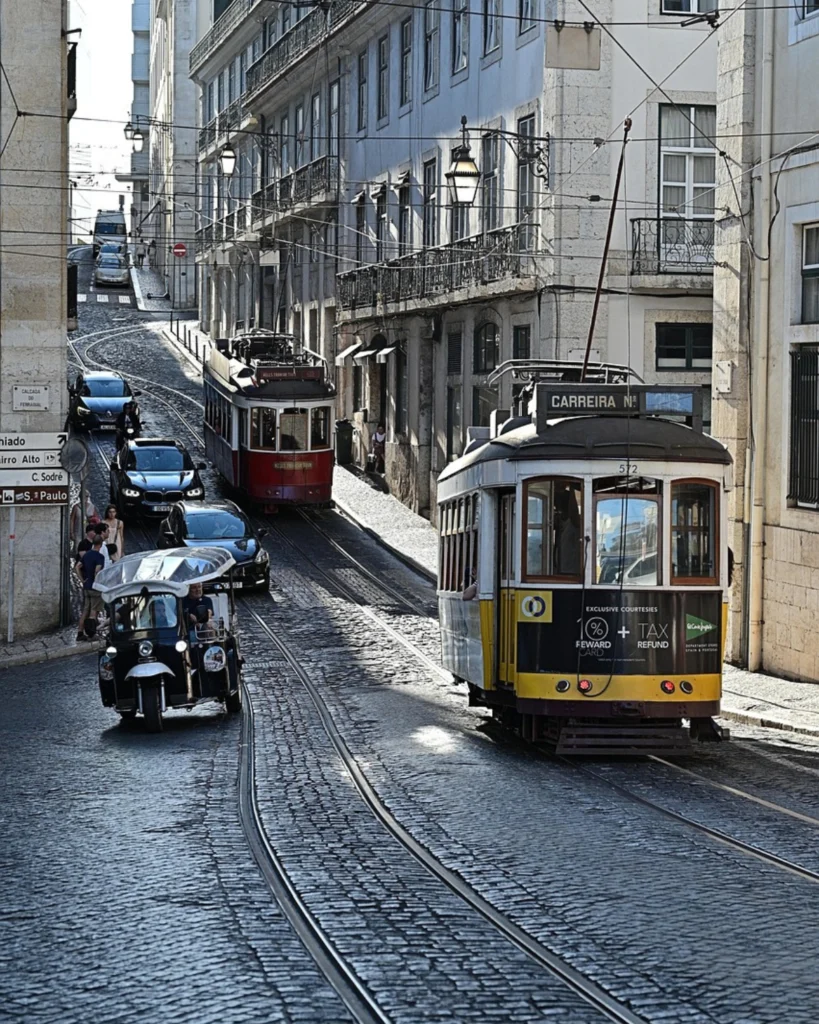
When in Rome, Build Like Romans Do (205 BCE – 409 CE)
The Romans didn’t just visit — they properly moved in. Julius Caesar himself signed the paperwork in 49 BCE making Lisbon a proper Roman municipality. Only thirty cities in the entire empire got that honour, and suddenly every free-born Lisboeta was a Roman citizen. Imagine getting an EU passport today — similar vibe, except with togas.
They built like Romans always did: excessively. An amphitheatre for 5,000 people (you can see bits on Rua de São Mamede), a massive circus for chariot racing under what’s now Rossio Square, and — this is brilliant — a fish sauce factory that produced more garum than modern Portugal exports anchovies.
My mate Carlos, who runs tours for history nerds, showed me something incredible last month. The old shops on Rua dos Bacalhoeiros? They’re standing on Roman foundations made with volcanic ash concrete imported from Vesuvius. That’s right, they literally shipped volcano dust from Italy because it made stronger concrete. Two thousand years and eighteen earthquakes later, those foundations are still solid. Meanwhile, my Brighton flat from the 1970s has cracks everywhere.
The 400-Year Plot Twist Nobody Expects (714-1147)
Here’s what British schools don’t teach you: for 433 years (longer than the USA has existed, longer than the time since Shakespeare), Lisbon was a Muslim city called al-Ushbuna. And it wasn’t some backwater — we’re talking 100,000 residents when London was a muddy village of 15,000.
The Muslims didn’t just occupy Lisbon; they transformed it. Those gorgeous ceramic tiles you see everywhere? Azulejos? That’s from the Arabic al-zulayj. The twisty Alfama streets that make no sense? Moorish urban planning — deliberately maze-like to create shade and catch breezes. Genius, really, especially in August when you’re melting.
My barber, António, told me something fascinating. His family has been in Alfama for “always” (Portuguese for “at least 500 years”), and they still use Arabic words without realising. Alfama itself comes from al-hamma, meaning hot springs. Alface (lettuce) is from al-khas. Even oxalá (hopefully) comes from inshallah. The Muslims left in 1147, but their language never quite did.
The Earthquake That Changed Everything (And I Mean Everything)
Picture this: It’s All Saints’ Day, 1755. Everyone’s at church. At 9:40 AM, the ground starts moving. Not a little tremor — we’re talking magnitude 9.0, the kind that shouldn’t happen in Europe. Six minutes of shaking. Then a tsunami. Then fires that burn for five days straight.
When the dust settled, 85% of Lisbon was gone. Between 30,000 and 50,000 people dead out of 275,000. Every major church collapsed (on a religious holiday — theologians had a field day with that one). The royal library with 70,000 books? Ash. Centuries of exploration records? Gone.
But here’s where it gets interesting. The prime minister, Marquês de Pombal, basically invented disaster management. While everyone else was praying, he sent out history’s first earthquake survey. Thirteen questions to every parish: What time did it start? How long did it last? Did animals act strange beforehand? Then he used the answers to create the world’s first earthquake risk map.
The reconstruction was even cleverer. Those boring grid streets in Baixa that look nothing like old Lisbon? They’re scientifically designed. Wide enough that falling buildings can’t block them. Heights calculated so they don’t create wind tunnels. And the buildings themselves have these wooden frames inside called gaiola pombalina — “Pombaline cages” — that flex during earthquakes. Japanese engineers came to study them in 2005 and basically said, “Yeah, these would survive anything up to magnitude 8.0. Nice work, 18th-century Portugal.”
Turning All This Lisbon Historical Tours Knowledge Into Your Actual Holiday
The “Time Traveller’s Perfect Day” (Tested on Dozens of Visiting Mates)
9:00 AM sharp – Start Where It All Began
Get to São Jorge Castle when it opens. I mean literally be there when they unlock the gates. Why? Because by 11:30, there’ll be 47-minute queues (I’ve timed it). But at 9:15? You’ll have Roman ruins to yourself.
Turn left immediately after entering — everyone goes right to the views. Find the archaeological site. Last Tuesday, I was there with my daughter Lena, and we were the only people exploring actual Phoenician house foundations. She asked if ancient people were tiny because the rooms looked small. (They weren’t tiny; they just didn’t have as much stuff.)
11:00 AM – Get Properly Lost in Alfama
Forget maps. Seriously. The whole point of Alfama is that it doesn’t make sense. These streets were designed by people who thought straight lines were suspicious. Just wander downhill — you’ll always hit the river eventually.
Look for Rua da Adiça (from the Arabic al-dice, meaning fortress). Most tourists miss it because there’s no sign saying “THIS IS HISTORICALLY SIGNIFICANT.” But my neighbour José’s grandmother remembers when they found Hebrew inscriptions behind her kitchen tiles during renovations in the 1960s. Three religions, one tiny street.
1:00 PM – Tram to Belém (But Do It Right)
Everyone takes the 28 tram. Don’t. It’s a tourist sardine tin. Take the 15E along the river instead — same vintage trams, quarter of the crowds, and you actually see where Vasco da Gama set sail to find India.
At Belém, yes, queue for pastéis de nata at the famous place (they genuinely have been using the same recipe since 1837 — I’ve watched them make 22,000 in a single day). But while you’re waiting, notice the monastery next door. It was built entirely with spice money — a 5% tax on cinnamon and pepper from the Indies. One building, funded entirely by seasoning. Mental.
3:30 PM – The Pombaline Experience
Walk back through Baixa’s grid streets. Boring? Sure. But stamp your foot hard on the pavement. Feel that slight give? That’s earthquake-resistant engineering from 1755. These buildings are designed to sway, not snap.
Duck into the Núcleo Arqueológico on Rua dos Correeiros (free, but you need to book). It’s in a bank basement, and you can walk through actual Roman galleries. The mad part? They only found them in 1991 when installing a safe. Imagine being the construction worker who hit that with his drill.

Lisbon Historical Tours Worth Your Pounds Sterling
For Proper History Buffs: Miguel from Context Travel has a PhD in Roman archaeology and will make you see things you’d never notice. His tour is €85 for four hours, max six people. Last time, he showed me tool marks on Roman stones that proved they were recycled from an even older temple. Mind = blown.
For Families: Treasure Hunt Lisboa is brilliant. €30 for adults, kids free. Your phone gives you historical challenges at GPS spots. My kids have done it three times and still beg to go again. They learn history without realising it’s educational — parenting win.
For Different Perspectives: The Lisbon Afro Tour (€25, Thursdays and Sundays) tells stories you won’t hear elsewhere. Did you know there were African Roman senators? Or that fado has West African roots? Naky, the guide, is Cape Verdean and brings receipts for everything.
Lisbon Historical Tours Practical Tips Nobody Tells You
Right, let’s talk about when to come. July and August? You’re having a laugh. It’s 35°C, everything costs double, and you’ll spend more time in queues than actually seeing things. I counted 2.3 million tourists per month last summer. That’s like the entire population of Paris descending on a city a tenth the size.
October is perfect. Still 21°C, barely rains (14% chance per day), and tourist numbers drop by nearly half. Plus, the light is gorgeous — all golden and sideways, making every photo look like a Renaissance painting.
About walking: you will walk. A lot. My phone says I average 22,000 steps on history days, climbing the equivalent of 47 floors. Lisbon’s hills are no joke — some streets hit 13.5% gradient. That’s steeper than most treadmill maximum settings.
Wear proper shoes. I learned this after twisting my ankle on wet cobblestones while wearing trendy trainers. Now I wear cushioned walking shoes with actual grip. Your Instagram photos might suffer, but your ankles will thank you.
The Lisboa Card question: worth it? Depends. The 72-hour one costs €44. If you hit seven museums and use public transport, you’ll save money. But honestly? Some of the best historical spots are free. Churches, viewpoints, wandering ancient neighbourhoods — zero euros.

Why This Actually Matters
Look, I get it. Historical tours can feel like expensive school trips. But Lisbon’s different. This isn’t history behind velvet ropes — it’s history you accidentally lean against while drinking coffee.
Yesterday, I had my morning espresso at a café built into a Roman wall. The owner’s kid was doing homework on a marble slab that was probably an altar to Jupiter. Nobody makes a fuss. It’s just Tuesday in Lisbon.
That’s what gets me about this place. History isn’t preserved here; it’s just… used. My kids go to school in a former convent. The metro station has Roman kilns in it. The car park ticket machine is bolted to a medieval wall. After seven years, I still find something ancient every week.
Understanding Lisbon’s layers changes how you see the city. That wonky street? It’s following a Roman road. That random arch? Medieval city gate. That ugly 1960s building? It’s sitting on Phoenician dock foundations, which is why it can’t be demolished.
Come Add Your Own Layer to the Story
Every person who visits Lisbon adds to its story. You’re walking where Phoenicians traded, Romans governed, Muslims prayed, Jews sought refuge, explorers departed, and earthquake survivors rebuilt. Your footsteps join theirs on stones worn smooth by three millennia of humanity.
That’s not romantic nonsense — it’s literally true. The limestone cobblestones are so soft that each year of footfall visibly wears them down. You can see the grooves where Roman carts turned corners. In a thousand years, someone will see the paths we wore today.
FAQs About Lisbon Historical Tours
What are Lisbon Historical Tours?
Guided walks through 3,000 years of Lisbon’s history, landmarks, and hidden gems.
How long do they last?
Usually 2–4 hours, with some full-day options available.
Are they good for first-time visitors?
Yes, Lisbon Historical Tours are perfect for beginners and history lovers alike.

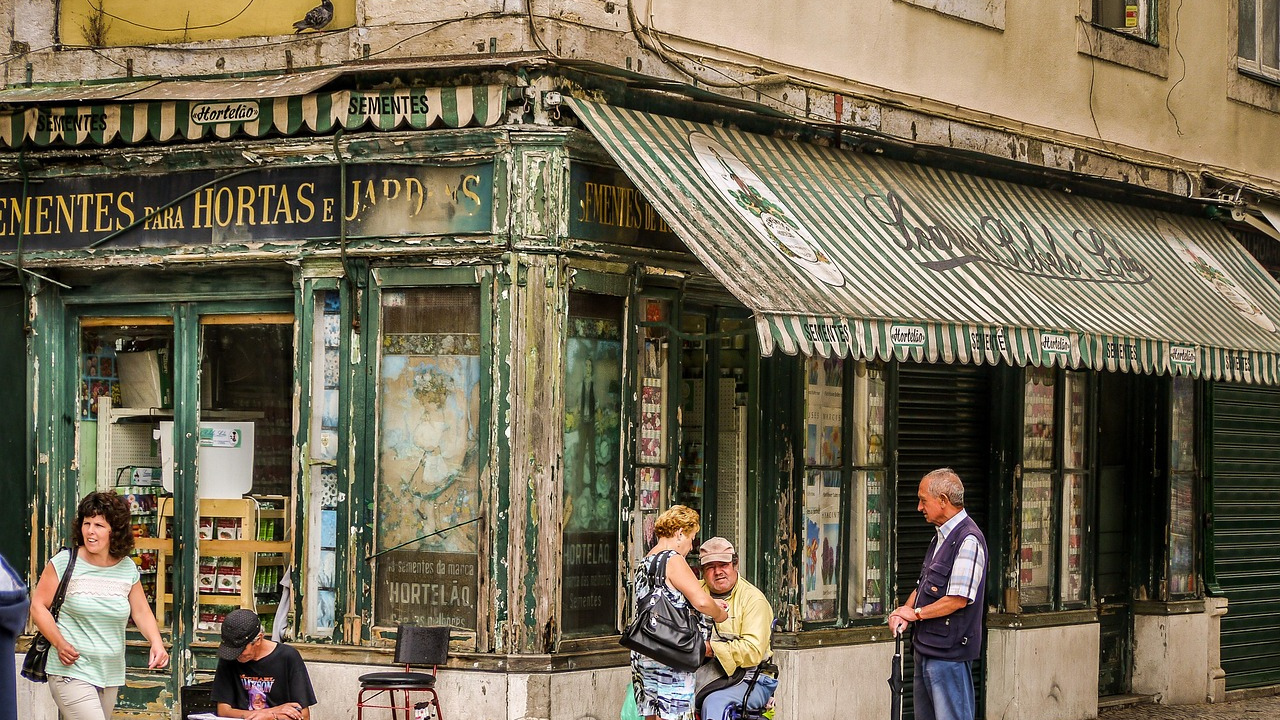

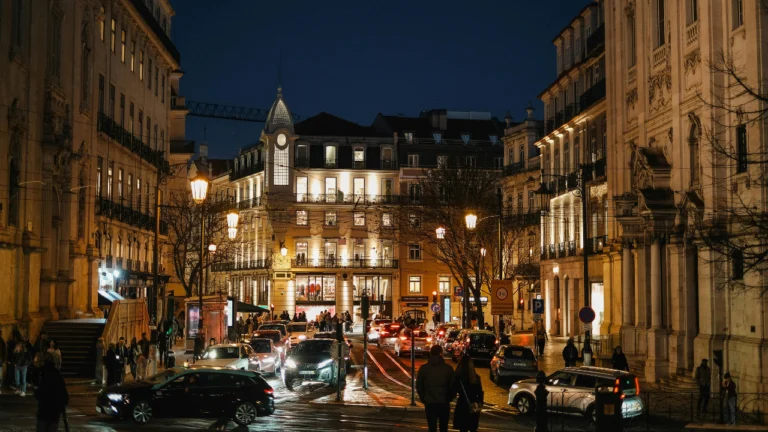
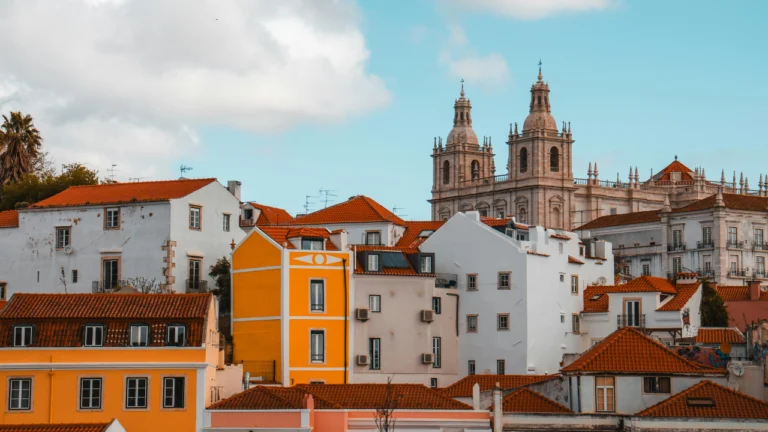
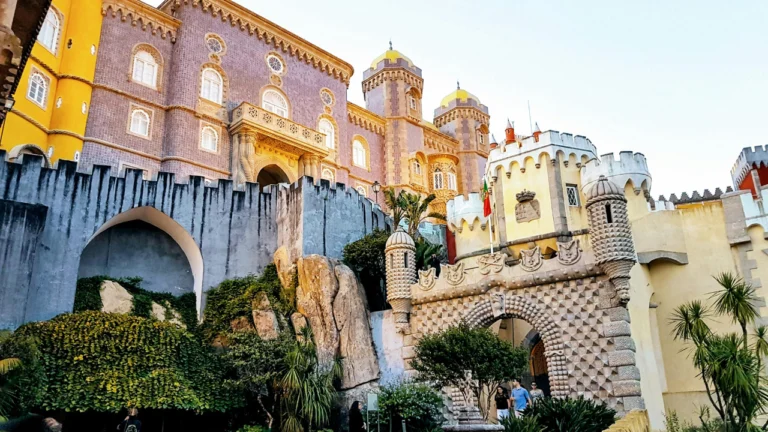
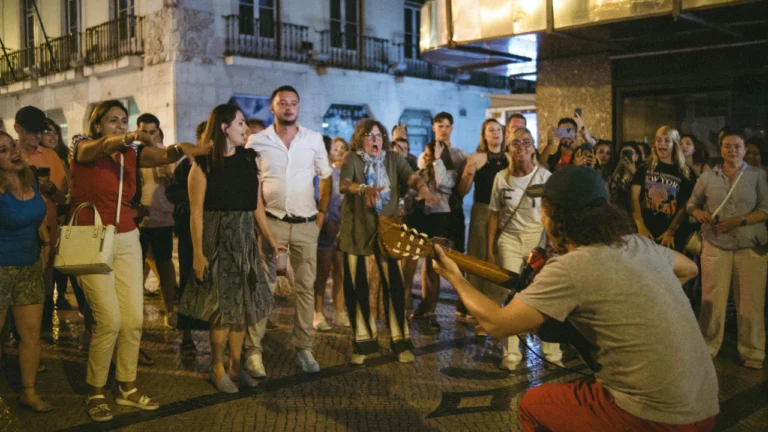
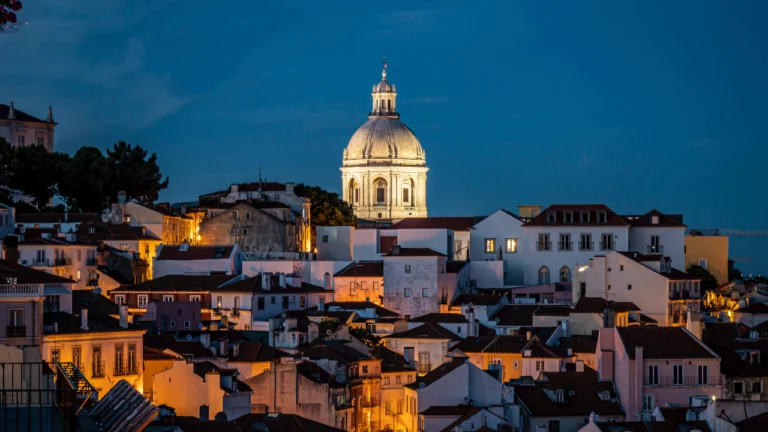
5 Comments